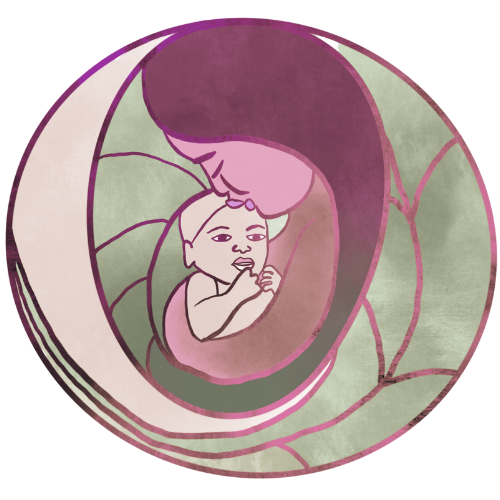Snacks for Gestational Diabetes: Nourishing Your Body with Care and Wisdom
Grounded guidance for tending your blood sugar with love, presence, and whole foods during pregnancy.
Honoring the Body’s Wisdom During Gestational Diabetes
A gestational diabetes diagnosis doesn’t mean your body is failing you—it means your body is asking for a different kind of attention. During pregnancy, hormones naturally change how your body processes glucose. For some women, this results in elevated blood sugar levels or glucose levels, which can impact both maternal and baby health if unmanaged. But rather than seeing it as a problem to fix, we can choose to see it as a sacred invitation to slow down, listen, and nourish more deeply.
Your body is already wise. She is creating life. When gestational diabetes enters the picture, it’s not about restriction or shame. It’s about tending your body with consistency, love, and nourishment. This begins with how you structure your meals and snacks throughout the day. When blood sugar dips or spikes, your body experiences stress. But when we offer it steady fuel—the kind that speaks the language of our biology and our spirit—we create balance.
Snacking with intention becomes a foundational practice. Instead of skipping meals or grazing chaotically, we begin to build a rhythm: eating every 2–3 hours, choosing whole foods, and pairing macronutrients thoughtfully. Each snack becomes a small act of devotion, supporting your blood glucose while providing steady energy for baby’s development.
Let this be a practice of honoring, not controlling. When you bring reverence to the snacks you choose, you turn blood sugar management into self-love.
What Makes a Snack Supportive?
The most effective snacks for gestational diabetes are not about deprivation—they’re about intelligent combinations. When you combine lean protein, healthy fats, and complex carbohydrates, you give your body the tools it needs to keep glucose levels stable without the crash. Instead of focusing on numbers alone, we focus on how food feels in your body. Does it ground you? Sustain you? Leave you feeling steady?
Many packaged snacks, even the ones marketed as “healthy,” are loaded with added sugars or overly processed ingredients that can spike blood sugar levels and leave you feeling drained. The key is to build your snacks with whole, nourishing ingredients that support your natural insulin response.
Here are some tips for healthy snacking:
Always include a source of lean protein (like cheese, nuts, hard-boiled eggs, or yogurt)
Pair carbs with fiber and fat to slow glucose absorption
Keep portions mindful, but not restrictive
Eat before you feel ravenous
Avoid eating simple carbs (like white bread or sweets) on their own
When in doubt, ask: Is this snack helping me feel nourished and connected, or scattered and spiked? Listening to your body’s response becomes the most powerful nutritional tool you have.
Everyday Snack Pairings for Gestational Diabetes
Here are some earthy, grounding snack ideas that combine flavor, satiety, and blood sugar support:
Apple slices + peanut butter: A sacred classic. The fiber in the apple slows digestion, while the peanut butteroffers protein and healthy fat.
Grain crackers + tuna or hummus: Choose whole grain or seed-based crackers. The pairing of carbs with lean protein keeps energy steady.
Cottage cheese + fresh fruit or tomatoes: A deeply nourishing combo with protein, calcium, and gentle sweetness. Avoid high-sugar canned fruits.
Plain Greek yogurt + cinnamon + chia seeds: Naturally lower in sugar and rich in probiotics and protein. Add cinnamon to help with blood sugar regulation.
Hard-boiled egg + avocado toast (on whole grain): Satisfying, blood-sugar-friendly, and filled with nourishing fats.
Trail mix (low sugar): Opt for a homemade mix with raw or roasted nuts, pumpkin seeds, unsweetened coconut flakes, and a few pieces of fresh fruit or dried fruit (in moderation).
Let these snacks be beautiful. Plate them intentionally. Eat slowly. Sit down. Breathe. This is about so much more than macros—it’s about connection.
The Power of Bedtime Snacks for Blood Sugar Stability
One of the most overlooked practices in managing gestational diabetes is the role of a thoughtfully chosen bedtime snack. Overnight is a long time to go without nourishment, and for many women, blood sugar dips or early-morning spikes can occur as the liver releases glucose while you sleep. A balanced nighttime snack can help stabilize glucose levels, prevent overnight highs and lows, and support deeper rest.
But not all bedtime snacks are created equal. The goal here is to provide a slow-digesting combination of protein and complex carbohydrates. Here are a few midwife-loved bedtime snack ideas:
A slice of whole grain toast with almond butter and cinnamon
Plain Greek yogurt with a tablespoon of chia seeds or a few walnuts
Cottage cheese with a few slices of pear or some fresh berries
A small bowl of oatmeal with ground flax and pumpkin seeds
Dairy products like cheese paired with a few grain crackers
The body does so much work while you sleep—rebuilding, replenishing, growing a baby. Offering it something gentle and steady to metabolize throughout the night supports both physical and emotional wellbeing. If you’re waking up in the early morning with headaches or nausea, an evening snack may be the missing piece.
Consider making this snack a ritual: candlelight, cozy socks, a warm tea. Let it be a gentle landing into rest.
Sacred Nourishment and Emotional Grounding
There is something radical about choosing to eat with reverence in a culture that teaches women to fear food—especially during pregnancy. With gestational diabetes, the pressure to “get it right” can quickly become overwhelming. But this is your invitation to slow down and remember: food is medicine, and medicine is sacred.
Instead of seeing snacks as a clinical necessity or an inconvenience, see them as sacred offerings. Each time you nourish yourself, you nourish your baby. Each bite can be an act of self-respect. Each meal can be a moment of reconnection.
Let go of the idea that there is one “perfect” way to eat. Listen. Your body is already speaking. The key is consistency, love, and softness. This is about nourishment, not punishment.
Add herbs to your snacks. Bless your food. Trust that your blood sugar levels are not a judgment of your worth, but simply information—data that helps guide your care.
Let snacks become part of your daily ritual of self-trust and devotion.
Working with Professionals Who Honor the Whole You
Navigating gestational diabetes isn’t something you need to do alone. A skilled registered dietitian, midwife, or holistic nutritionist can help you create a plan that supports your blood sugar and your soul. You deserve a guide who honors your intuition, listens to your story, and builds strategies that meet your life as it is.
A registered dietitian trained in gestational diabetes can help you:
Understand your body’s specific glucose responses
Pair foods in supportive ways
Identify hidden added sugars or blood sugar disruptors
Adjust snack timing to reduce energy dips or spikes
This is especially helpful if you’re juggling multiple demands or if snacking feels stressful. Instead of obsessing over glucose readings or food logs, you can shift into grounded experimentation: What works? What feels good? What leaves me nourished and peaceful?
Let your care team be one that integrates body and spirit. This is not about perfection—it’s about support.
Tips for Healthy Snacking from a Midwife’s Heart
Here are some midwife-approved tips for healthy snacking that nourish both your blood sugar and your nervous system:
Snack every 2–3 hours to prevent spikes and crashes.
Keep snacks accessible in your bag, car, nightstand, and kitchen.
Avoid skipping snacks before appointments or outings.
Balance your plate: fat, fiber, and protein are your best allies.
Add herbs and grounding spices like cinnamon, cardamom, or fennel.
Eat slowly and with presence. Sit down. Take a breath.
Bring beauty to your food: use ceramic plates, linen napkins, soft light.
And most importantly? Give yourself grace. Pregnancy is not a performance. It is an unfolding. Eating well for gestational diabetes is not about control—it is about honoring your body’s sacred messages and responding with devotion.
This Is Sacred Fuel, Not a Restriction
Food is not the enemy. And a diagnosis of gestational diabetes is not a punishment. Your body is wise. She is adapting to a powerful season of creation. Choosing snacks for gestational diabetes that nourish you deeply is not about avoiding fear—it’s about stepping into partnership with your own biology.
Eat slowly. Eat joyfully. Eat with trust. Let every snack be a moment of connection—to your baby, your breath, your blood, and your womb.
When we feed ourselves with presence and intention, we transform blood sugar management into an act of healing.
FAQs
What are the best snacks for gestational diabetes when I’m on the go?
When you’re running errands, working, or chasing toddlers, snacks that are portable and balanced are essential. Look for combinations that include lean protein, complex carbs, and healthy fats. Pre-portioned trail mix (unsweetened), boiled eggs, grain crackers with a single-serve nut butter packet, or plain Greek yogurt cups can all work well. String cheese paired with an apple slice, or a small bag of roasted chickpeas, offers both nourishment and convenience. The key is to plan ahead—keep a small stash in your bag, car, or desk. Choose snacks that won’t spike blood glucose, but that also feel satisfying and comforting. Let them be familiar, grounding, and joyful—not punitive or boring. Add an herbal tea or a splash of lemon water, and you’ve created a moment of care in the middle of a busy day.
Can I eat fruit if I have gestational diabetes?
Yes—but with thoughtfulness. Fresh fruit can absolutely be part of a supportive gestational diabetes plan. The key is to pair fruit with protein or fat to prevent sharp glucose level spikes. For example, enjoy apple slices with peanut butter, or berries with cottage cheese. Choose fruits that are lower on the glycemic index (like apples, pears, or berries), and avoid fruit juices or dried fruits with added sugars. Portion size matters too: half a banana with almond butter may work better than a full one. Track how different fruits affect your body by noting how you feel afterward and, if you’re testing, observing your numbers. Fruit isn’t forbidden. In fact, it’s rich in vitamins, fiber, and hydration. It just needs a companion on the plate.
What if I’m still hungry after meals or snacks?
Hunger is not something to fear or ignore. With gestational diabetes, it’s especially important to distinguish between blood sugar-related cravings and true physiological hunger. If you’re eating balanced meals and snacks and still feeling hungry, you may need to slightly increase your portion sizes—especially of lean protein, fiber-rich veggies, and healthy fats. Some women also benefit from adding an extra small snack between meals. Skipping food or white-knuckling through hunger can actually backfire, causing cortisol (stress hormone) spikes that affect blood sugar levels. Honor your body’s cues. Pregnancy is not the time to diet or restrict. If you’re unsure, work with a registered dietitian who can help you fine-tune your intake without shame. Your hunger is a message, not a mistake.
Ready to create a more grounded, nourishing approach to your pregnancy? Work with Fruit of the Womb. This is your time to be cared for deeply.
About the Author, Tori T.
Tori is a Reiki Master, yogi, and healer, certified in sound, color, and crystal therapies. With a passion for holistic wellness, she combines ancient wisdom with modern practices to guide individuals on their journey to balance and harmony. Through her work, Tori aims to inspire and empower others to achieve their highest potential.

